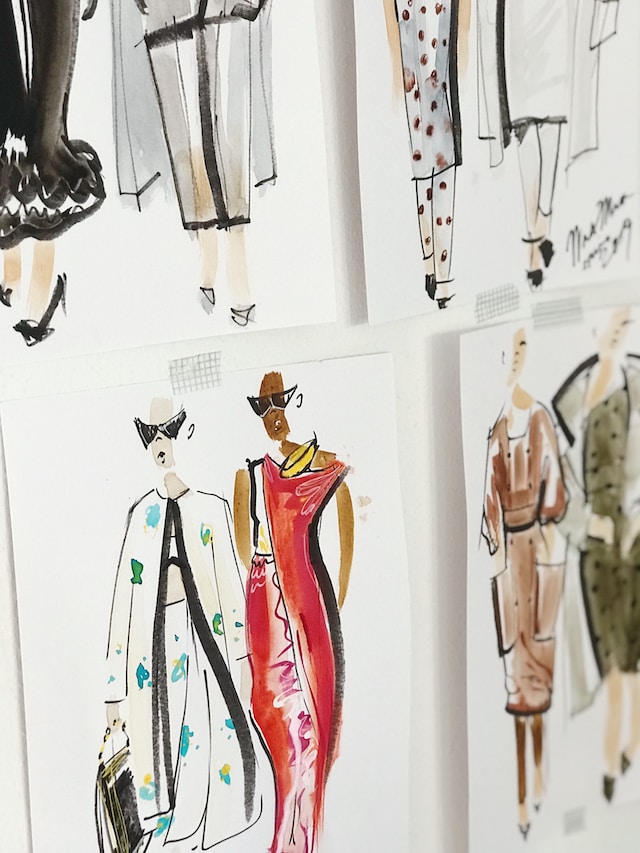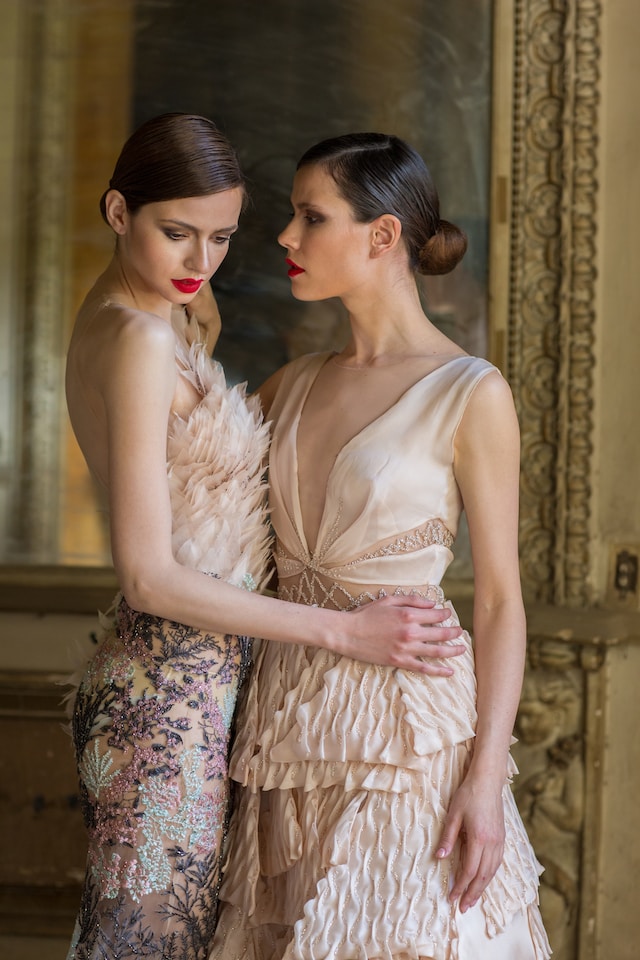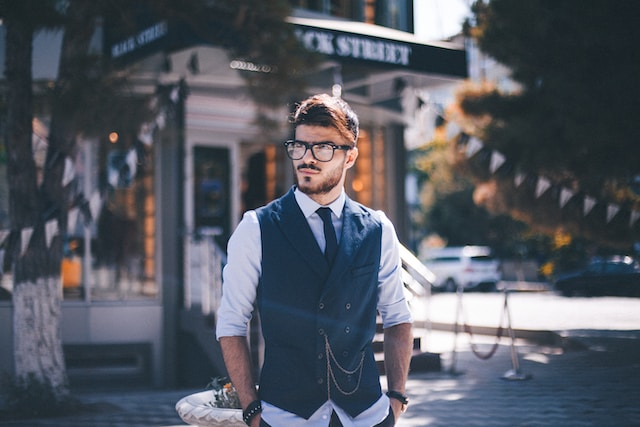
The world of fashion has long been a captivating enigma, evolving and expanding in ways that few industries can match. From humble beginnings as a means of clothing oneself, fashion has transformed into a powerful global force that shapes cultures, influences trends, and drives economic growth. In this ever-changing landscape, the business of fashion has emerged as a complex and multifaceted entity, intertwining creativity, commerce, and consumer demand.
In this article, we delve into the intriguing journey of how the fashion industry has grown and changed over time, exploring its roots, significant milestones, and the transformative forces that continue to shape it today.
Early Beginnings of the Business of Fashion
In the distant past, long before glittering runways and bustling shopping streets, the fashion industry had its humble beginnings. It emerged out of a simple desire for clothing, driven by the necessity to protect oneself from the elements and find comfort in one’s surroundings. In those early times, fashion was a practical affair, devoid of the glamour and grandeur we associate with it today.
Primitive societies would fashion clothing from available resources, relying on their creativity and resourcefulness to create garments that served the basic purpose of protection. Animal skins, plant fibers, and other natural materials were ingeniously crafted into clothing, each piece reflecting the local culture and environment.
As societies evolved and developed, fashion began to take on a more significant role. Clothing became a means of communication, reflecting social status and identity, and distinguishing members of different tribes or classes. This marked the birth of the first fashion trends, as individuals sought to emulate the clothing choices of their leaders or the elite.
With the advent of the industrial revolution, the fashion business experienced a transformative shift. The mechanization of textile production led to the mass production of clothing, making it more accessible to a wider population. Clothing ceased to be a purely functional item and became an expression of personal style and taste.
The 20th Century and Contemporary Years
The 20th century witnessed further milestones in the evolution of the fashion business. The rise of fashion magazines allowed trends to be disseminated on a broader scale, fueling consumer desires and driving demand for new and innovative designs. Fashion houses began to emerge, creating haute couture pieces for the affluent elite, while ready-to-wear collections made stylish clothing accessible to the masses.
In recent years, the fashion business has undergone a digital revolution. The advent of e-commerce and social media has transformed how we discover, purchase, and engage with fashion. Brands and consumers can now connect instantaneously, erasing geographical boundaries and creating new opportunities for growth and exposure.
The Rise of Haute Couture
In the world of fashion, one term that exudes elegance and luxury is haute couture. Pronounced “oht koo-tyoor,” this French phrase translates to “high sewing” and has become synonymous with the pinnacle of fashion craftsmanship and artistry.
It was the visionary Charles Frederick Worth who is often credited as the founder of haute couture as we know it today. Born in England and later moving to Paris, Worth established his fashion house in the heart of the city, attracting aristocrats, socialites, and even royals with his exquisite designs.

What made haute couture truly unique was its meticulous attention to detail and emphasis on custom-made garments. Every stitch, every seam, and every embellishment was carefully handcrafted to create a piece that fit the client’s body perfectly and showcased their individuality.
The exclusivity and opulence of haute couture meant that only a select few could afford these exquisite garments. Each piece was an investment in timeless craftsmanship and unparalleled quality, often requiring several fittings and countless hours of work by highly skilled artisans.
The Impact of World Wars
The impact of World Wars on the business of fashion was profound and far-reaching. These global conflicts brought about significant changes in the industry, shifting the focus from luxury and decadence to practicality and utility. As nations went to war, resources became scarce, and manufacturing capabilities were redirected towards military needs. This meant that the production of fashion items, previously abundant and diverse, became limited and regulated.
During these turbulent times, the fashion industry had to adapt quickly to the changing landscape. Designers and manufacturers were forced to find innovative ways to create clothing with limited resources. Fabrics were rationed, and the use of synthetic materials, such as nylon, emerged as a viable alternative. Women’s fashion, in particular, underwent a dramatic transformation, as practical and functional clothing became the norm. Women began to wear trousers and overalls to work in factories and support the war effort, challenging traditional gender norms.
The business of fashion also played a role in supporting the war effort. Fashion magazines and designers were enlisted to promote patriotic fashion choices and encourage consumers to invest in war bonds instead of luxury garments. The concept of “make do and mend” became widespread, with individuals being encouraged to repair and repurpose their existing clothing rather than buying new items.
The Fashion Business in the Post-War Era
After the devastation of the World Wars, the fashion business underwent a period of recovery and rebuilding. As nations sought to rebuild their economies and societies, the fashion industry played a crucial role in revitalizing consumer confidence and providing a sense of normalcy. The post-war era saw a resurgence in fashion innovation and a renewed focus on the business side of the industry.
As manufacturing capabilities improved and resources became more readily available, designers and manufacturers embraced new technologies and materials.

Synthetic fabrics, such as polyester and rayon, gained popularity due to their affordability and versatility. These fabrics allowed for the mass production of clothing, making fashion more accessible to a wider audience.
Department Stores and Chain Retailers
The fashion business also saw the rise of department stores and chain retailers, leading to a shift in consumer shopping habits. These establishments offered a wide range of clothing options under one roof, providing convenience and choice to customers. Advertising and marketing played a significant role in promoting new fashion trends and enticing consumers to buy the latest styles.
During this period, fashion also became more influenced by popular culture and media. Film stars and celebrities became style icons, and their fashion choices were emulated by the masses. The business of fashion recognized the power of celebrity endorsements and collaborations, forging partnerships between designers and well-known personalities to increase brand visibility and sales.
Technology and the Digital Age
Technology has revolutionized the business of fashion, transforming the way designers create, market, and sell their products. With the advent of e-commerce and social media platforms, the fashion industry has experienced a seismic shift in consumer behavior and engagement.
In the digital era, the business of fashion has become more accessible and democratic. Online platforms provide designers with a global reach, allowing them to connect with consumers from all corners of the world.

Fashion brands can now showcase their collections through visually appealing websites and online lookbooks, providing a virtual shopping experience that rivals the brick-and-mortar store.
The Role of Social Media
Social media has emerged as a powerful tool for the business of fashion. Fashion influencers and bloggers have gained significant influence, shaping consumer trends and driving sales. With just a few clicks, these influencers can reach millions of followers, showcasing their favorite fashion items and driving consumer demand. Brands are now leveraging these online personalities, partnering with influencers to promote their products and tap into their loyal audiences.
Moreover, technology has streamlined the production process and made it more efficient. Designers now use computer-aided design (CAD) software to create digital prototypes and visualize their ideas before moving into production. This reduces waste and allows for quicker turnaround times, ensuring that the fashion business stays ahead of rapidly changing consumer preferences.
Sustainable and Ethical Fashion
The business of fashion has witnessed a significant shift in recent years, as the industry grapples with the pressing need for sustainability and ethical practices. With consumers becoming more conscious of their purchasing decisions, there has been a growing demand for fashion that is not only stylish but also mindful of its social and environmental impact.
Sustainable fashion, encompassing both eco-friendly and socially responsible practices, has emerged as a key focus in the business of fashion. Brands are now exploring ways to reduce their carbon footprint by using environmentally friendly materials, such as organic cotton, hemp, and recycled fibers. They are also implementing energy-efficient manufacturing processes and reducing waste through recycling and upcycling initiatives.
Ethical fashion, on the other hand, addresses the social aspects of the industry, focusing on fair labor practices and supply chain transparency. The business of fashion is moving towards promoting safe working conditions and fair wages for garment workers, as well as ensuring that no child labor or exploitation occurs throughout the production process.
A Shift in Business Strategies

In response to this growing demand, many fashion brands are incorporating sustainability and ethics into their business strategies. They are adopting certifications, such as GOTS (Global Organic Textile Standard) and Fairtrade, to provide assurance to consumers that their products have been produced in a responsible manner. These certifications act as a testament to a brand’s commitment to doing business responsibly and ethically.
Moreover, sustainable and ethical fashion has also given rise to new business models within the industry. Renting and swapping clothes, for instance, have gained popularity as consumers seek to extend the lifespan of garments and minimize waste. Fashion subscription services have also emerged, allowing customers to access a rotating wardrobe while reducing the need for constant buying.
The business of fashion is now more than just commerce; it is a conscious effort to promote positive change. Brands that prioritize sustainability and ethics not only contribute to a better future for the planet but also attract a growing segment of socially and environmentally conscious consumers. As the industry continues to evolve, the focus on sustainable and ethical practices will likely shape the future of the fashion business, making it a force for positive transformation.
